Fushimi Inari Shrine, in southern Kyoto, is an important Shinto shrine that attracts millions of visitors every year. The shrine is famous for its thousands of vermilion torii gates that create a striking visual display and lead into the forested Mount Inari.
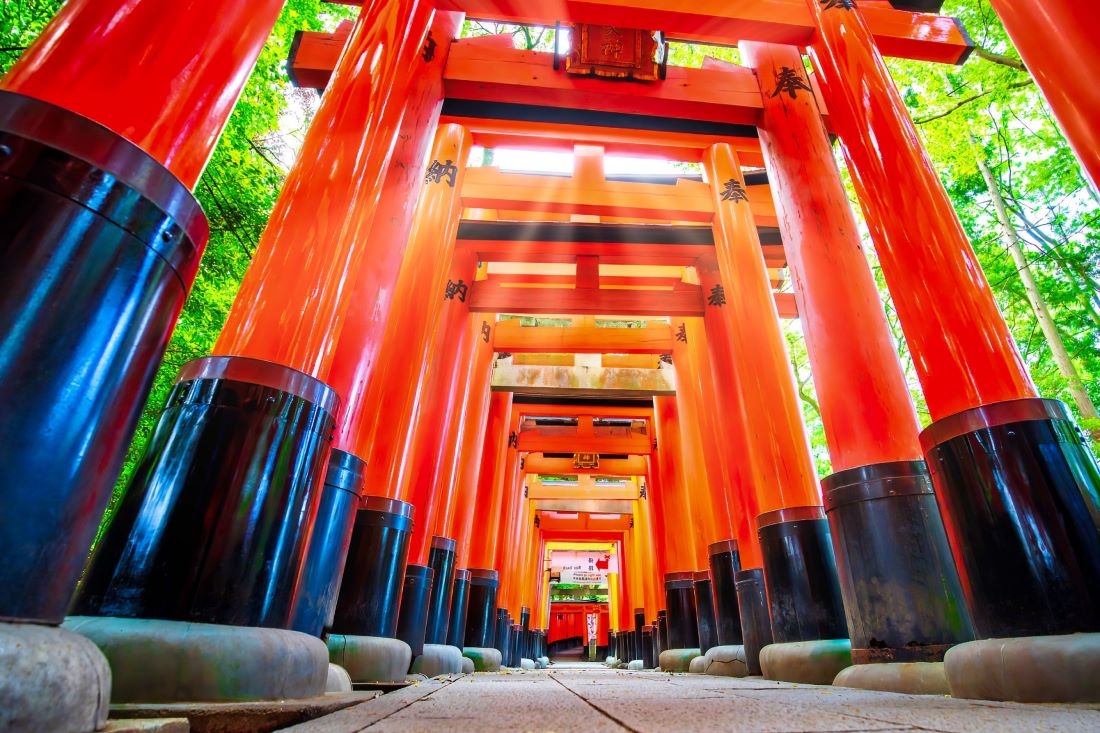
The shrine is dedicated to Inari, the god of rice, prosperity, and foxes, and is believed to have been founded in 711 AD.
It is the central location for over 40,000 Inari shrines throughout Japan and is considered one of the most important Shinto shrines in the country. The shrine’s popularity can be attributed to its unique torii gates, which were donated by individuals and companies as a form of gratitude for their business success.

The torii gates have become a symbol of the shrine and are often featured in photographs and artwork.
Visitors to Fushimi Inari Shrine can explore the network of trails that lead up to Mount Inari, which is believed to be the home of Inari.
The trails are lined with torii gates and offer sweeping views of Kyoto. The shrine is also known for its fox statues, which are believed to be the messengers of Inari. You can purchase fox statues and other souvenirs at the shrine’s gift shop.
Origins
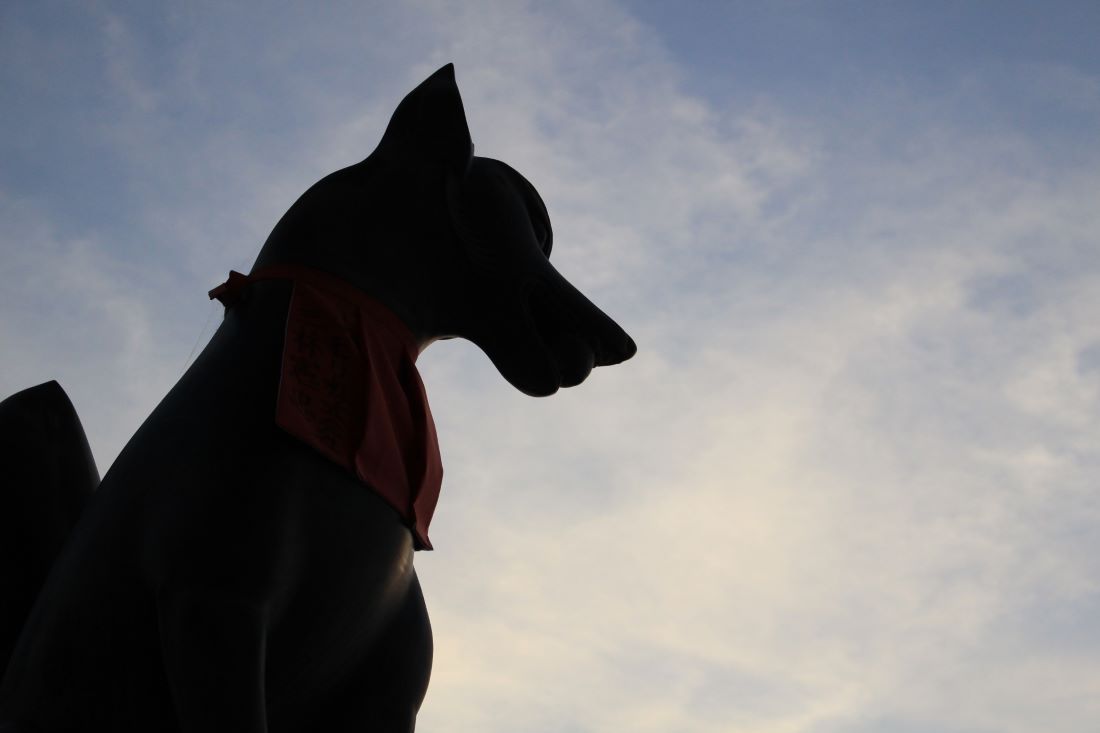
Fushimi Inari Shrine is one of the most important and well-known shrines in Kyoto, Japan. Its origins can be traced back to the 8th century when it was founded on Inariyama hill by the Hata family. According to legend, the shrine was built to honor the Shinto god of rice and prosperity, Inari.
Over time, the shrine grew in popularity and became an important site for imperial patronage during the early Heian period. In 965, Emperor Murakami decided that messengers would deliver written reports to the gods or Kami of Japan. These heihaku were delivered to 16 shrines, including Inari Shrine.
Significance
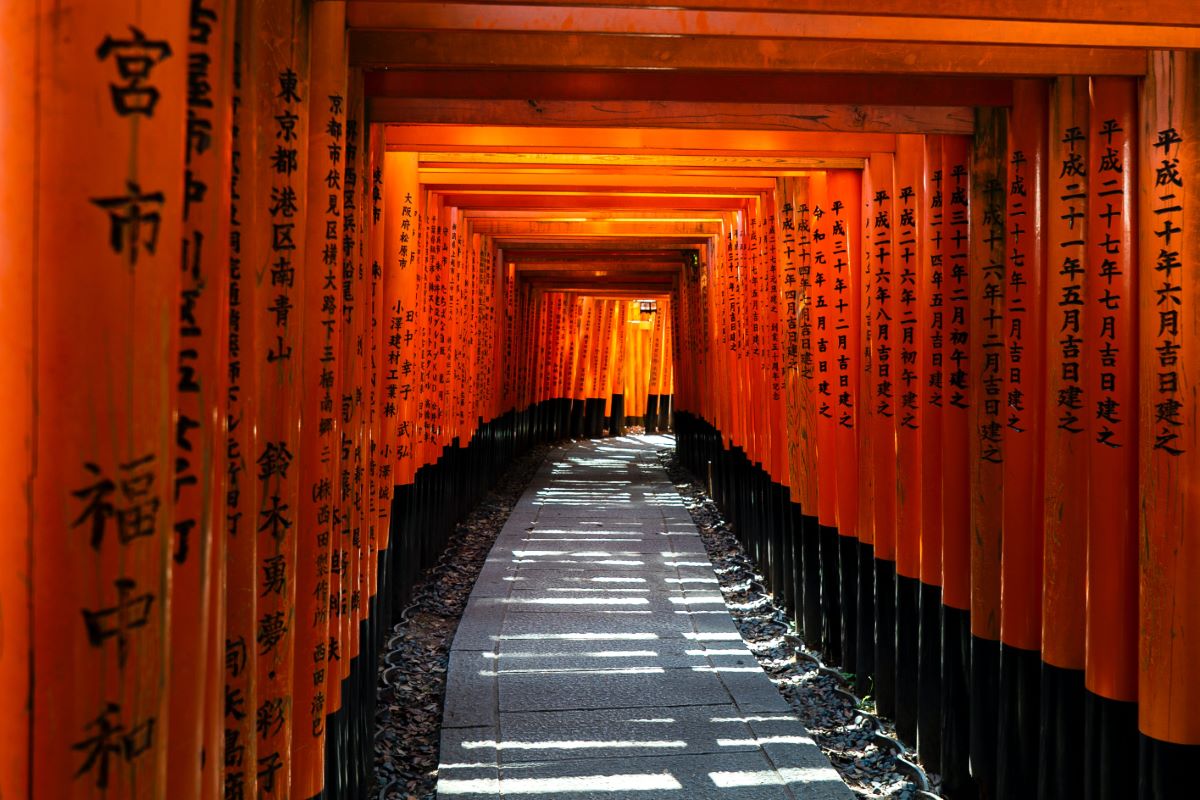
Today, Fushimi Inari Shrine is known for its thousands of vermilion torii gates that line the trails up the mountain behind the main shrine buildings. These torii gates were donated by individuals and companies as a way of showing their gratitude for the blessings they received from Inari.
The shrine is also popular among tourists who come to explore the mountain trails and take in the stunning views of Kyoto from the top. It is a symbol of Japan’s rich cultural heritage and a testament to the enduring power of faith and tradition.
Architecture and Design

The Fushimi Inari Shrine is known for its unique and impressive architecture and design. The shrine has sub-shrines, buildings, and structures that are all intricately designed and decorated.
Torii Gates

The most striking feature of the Fushimi Inari Shrine is the thousands of torii gates that line the trails on the wooded forest of Mount Inari. The torii gates are made of wood and painted in bright vermilion color, which is considered sacred in Shinto religion. Each torii gate is donated by individuals or businesses, and the name of the donor and the date of donation are inscribed on the back of the gate.
The torii gates are arranged in a way that creates a tunnel-like effect, which is visually stunning and awe-inspiring. You can walk through the torii gates and enjoy the beautiful scenery of the forest.
Main Shrine Buildings

The main shrine buildings of the Fushimi Inari Shrine are at the bottom of the hill. The main gate, called Rōmon, is a towering structure that leads to the main shrine building, called Go-Honden. The main shrine building was built in 1499 and is made of cypress wood. The building is decorated with intricate carvings and paintings, and the roof is covered with copper plates.
Inside the main shrine building, you can see the statue of the deity Inari, which is made of wood and covered with gold leaf. The statue is surrounded by offerings and decorations, and you can offer their prayers and wishes at the altar.
Statues and Artwork

The Fushimi Inari Shrine is also home to statues and artwork that are considered important cultural treasures. One of the most famous statues is the statue of the fox, which is considered the messenger of Inari. The statue is made of bronze and is near the main shrine building.
The shrine also has paintings and carvings that depict scenes from Japanese mythology and history. These artworks are beautifully crafted and provide a glimpse into the rich cultural heritage of Japan.
Visiting Fushimi Inari Shrine
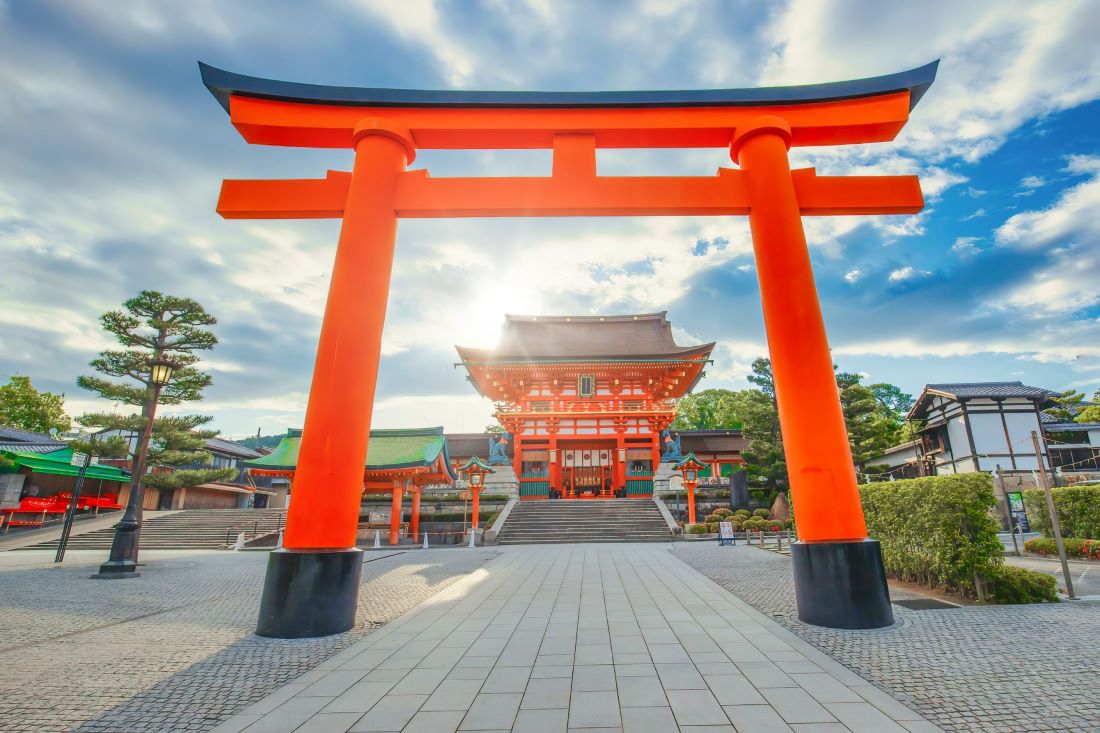
Fushimi Inari Shrine is in southern Kyoto and is easy to get to. You can take the JR Nara Line to Inari Station and the shrine is in front of the station. Alternatively, you can take the Keihan Line to Fushimi Inari Station and it’s about a 7-minute walk from there.
Opening Hours and Admission Fees
Fushimi Inari Shrine is open 24 hours a day, every day of the year, and admission is free. However, the shrine office is only open from 9:00am to 4:00pm.
Note that the shrine can get very crowded, especially during peak tourist season, so it’s recommended to visit early in the morning or later in the evening to avoid the crowds.
Etiquette and Customs
Visitors to Fushimi Inari Shrine are expected to follow certain customs and etiquette. It’s important to bow respectfully at the entrance gate and to purify oneself at the chozuya (water basin) before entering the shrine.
When walking through the torii gates, it’s customary to walk on the right side of the gate and to avoid walking in the center of the gate, which is reserved for the gods.
You can also make offerings at the shrine, such as coins or small items, and pray for good fortune or success in business.
Overall, visitors should be respectful of the shrine and its customs, and should dress appropriately, covering their shoulders and knees.
Fushimi Inari Shrine Festivals
Fushimi Inari Taisha is the head shrine of all the Inari shrines in Japan. It is known for its thousands of torii gates that line the mountain trails behind the shrine. The shrine hosts festivals and events throughout the year.
Omizutori
Omizutori is a Buddhist festival held at Todai-ji Temple in Nara and Fushimi Inari Taisha in Kyoto. It is held annually from March 1st to 14th. During the festival, monks perform a fire ritual called Shuni-e to cleanse the sins of the people and pray for world peace. On the night of March 12th, the monks light torches and run around the balcony of the Nigatsu-do Hall to symbolize the coming of spring. The festival attracts many visitors from all over Japan and the world.
Setsubun
Setsubun is a traditional Japanese festival that marks the beginning of spring. It is held on February 3rd or 4th every year. At Fushimi Inari Taisha, you can participate in the Setsubun festival by throwing beans at demons to drive them away and bring good luck. The shrine also offers special amulets and charms for visitors to purchase. The festival is a popular event for families with children.
Other festivals and events held at Fushimi Inari Taisha include the Saitan-sai in January, the Ochatsubo-sai in June, and the Chrysanthemum Festival in November. You can check the shrine’s website for more information on upcoming events.
Fushimi Inari Shrine Surroundings
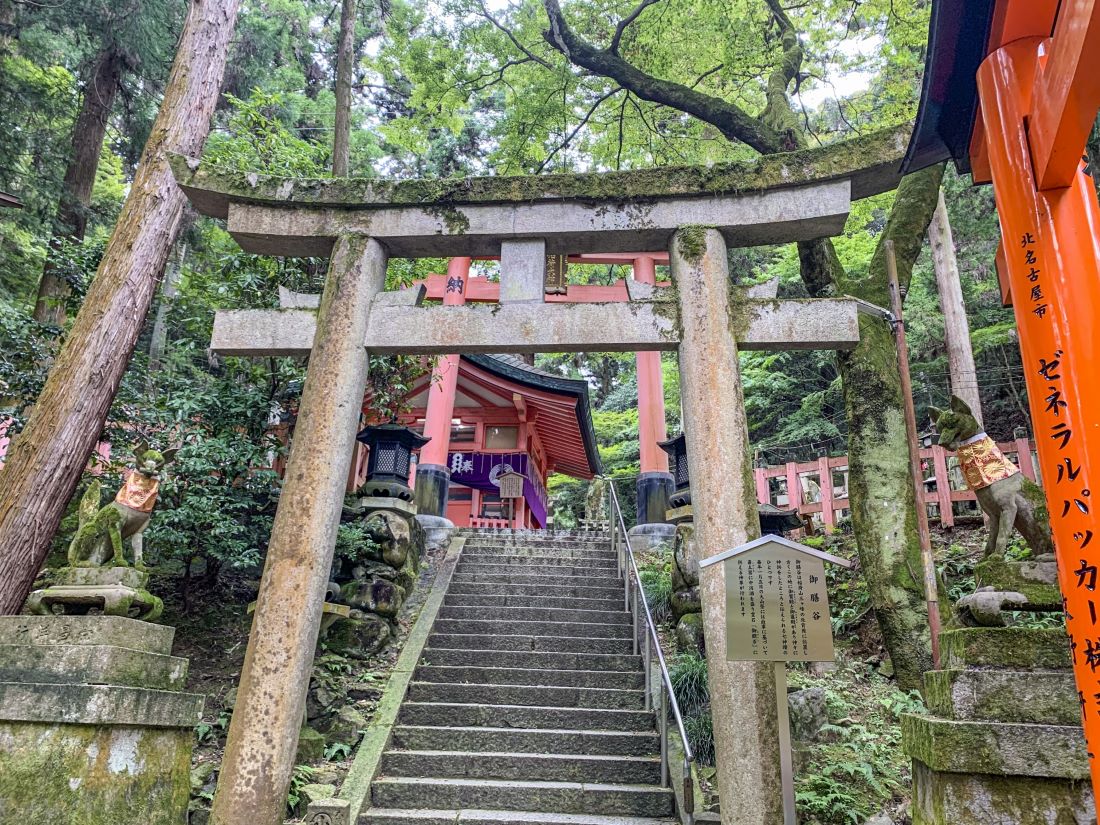
Inari Mountain
Fushimi Inari Shrine is at the base of Inari Mountain, which is a popular hiking destination for visitors. The mountain has trails that lead to the top, and the hike takes about 2-3 hours round trip. The trails are lined with thousands of torii gates, making for a unique and picturesque hike. You can also find small shrines and temples along the way, including Okusha Shrine and Yotsutsuji Intersection.
Kitsune-no-Yomeiri
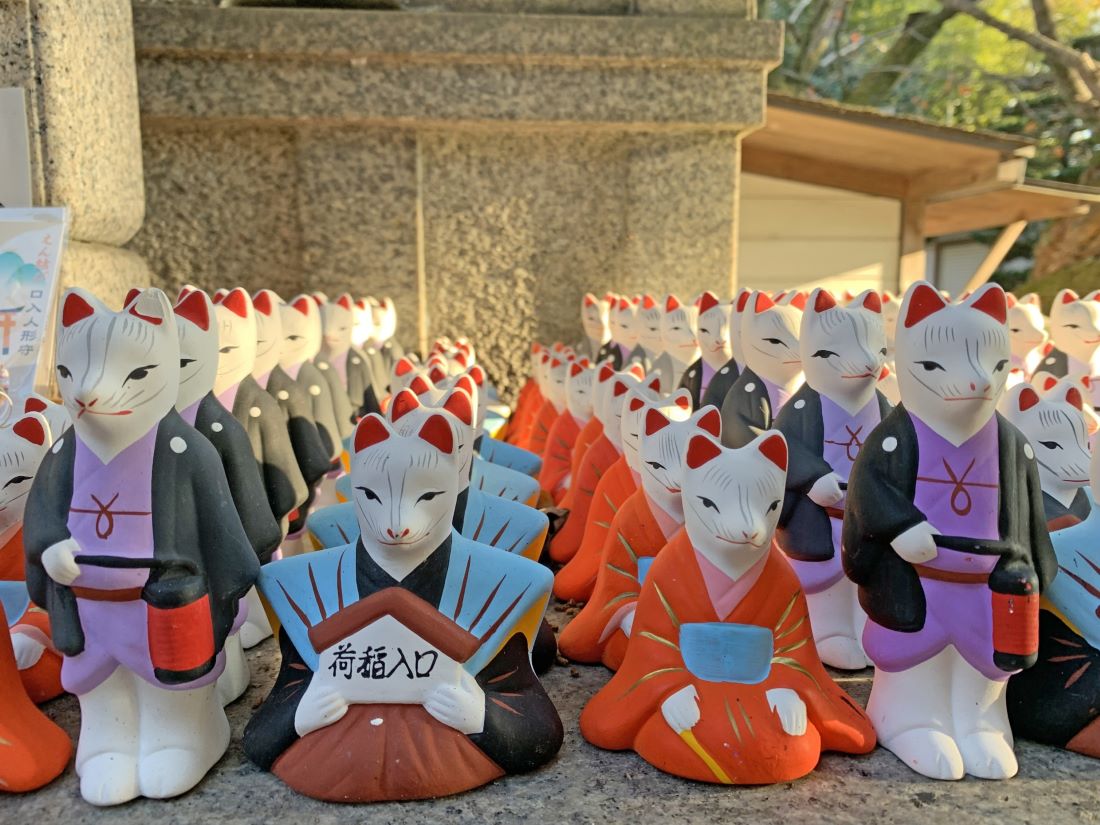
Kitsune-no-Yomeiri, or “fox wedding procession,” is a popular legend associated with Fushimi Inari Shrine. According to the legend, foxes gather at the shrine’s courtyard to hold a wedding ceremony. You can see fox statues and decorations throughout the shrine, representing the foxes that are believed to be messengers of the god Inari.
Other Nearby Attractions
There are other attractions near Fushimi Inari Shrine that you can explore. One of the most popular is Tofukuji Temple, which is known for its beautiful autumn colors. The temple is about a 15-minute walk from the shrine. Another nearby attraction is the Fushimi Sake District, which is home to traditional sake breweries. You can take a tour of the breweries and sample some of the local sake.
Overall, the surroundings of Fushimi Inari Shrine offer visitors a unique and diverse experience, with hiking trails, legends, and nearby attractions to explore.



